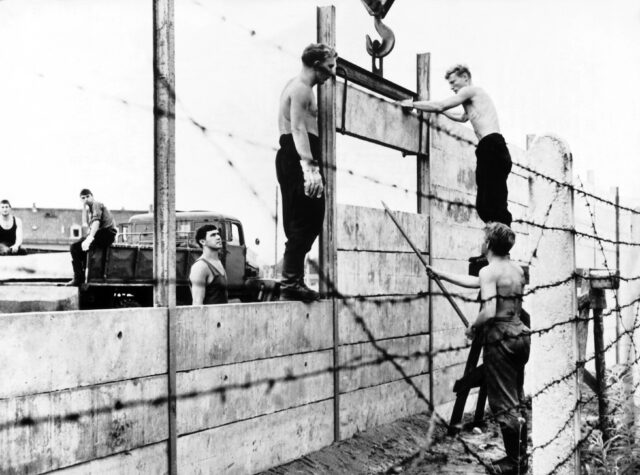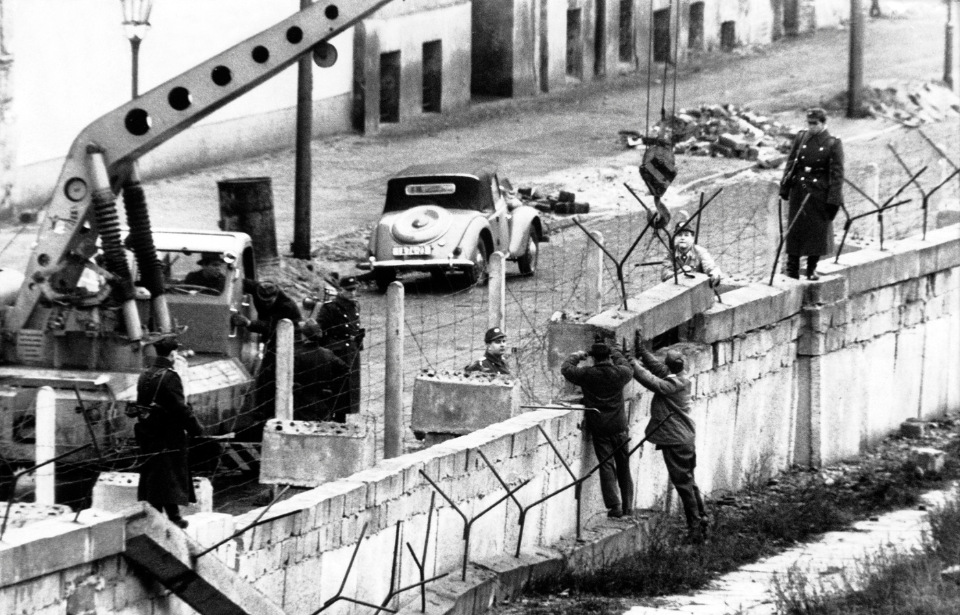Construction Begins on the Berlin Wall
On this day in history, August 13, 1961, the construction of the Berlin Wall began, marking a significant moment in the Cold War era. The wall would become a powerful symbol of the divide between the communist East and the capitalist West, impacting millions of lives.
After World War II, Germany was divided into four occupation zones controlled by the United States, the Soviet Union, the United Kingdom, and France. Berlin, located within the Soviet zone, was also divided into four sectors. By 1949, two separate German states were established: West Germany (Federal Republic of Germany) and East Germany (German Democratic Republic). As Cold War tensions grew, Berlin became a focal point of the ideological conflict between the two superpowers.

Between 1949 and 1961, around 2.7 million East Germans fled to West Berlin, seeking better economic opportunities and political freedom. This mass exodus created significant problems for East Germany, leading Soviet Premier Nikita Khrushchev and East German leader Walter Ulbricht to take drastic action. In the early hours of August 13, 1961, East German troops and workers began constructing a barrier that would later become known as the Berlin Wall. Streets were torn up, and barbed wire and barricades were erected, effectively closing the border between East and West Berlin.
The immediate impact of the wall‘s construction was profound. Berliners woke up to find themselves suddenly separated from family, friends, and workplaces. Transport services between the sectors were halted, and communication lines were cut, causing chaos and confusion. The construction of the wall shocked the world and intensified Cold War tensions. Checkpoint Charlie, one of the most famous border crossings, was established shortly after the wall’s construction began and became a symbol of the divided city.
Over the years, the Berlin Wall was reinforced and expanded into a complex series of barriers, including concrete walls, guard towers, and a “death strip” where many attempted to escape. The wall stood as a stark reminder of the ideological divide between East and West.
More from us: David Hasselhoff’s Unlikely Connection To The Fall Of The Berlin Wall
Would you like to see more daily historical content from The Vintage News? What if we sent it directly to your inbox every day? Sign up here to receive our daily Today in History posts.
The Berlin Wall remained in place for 28 years, symbolizing communist oppression and the Cold War’s impact on Germany and the world. On November 9, 1989, amidst political changes in Eastern Europe and mounting pressure from East German citizens, the wall was finally opened, leading to its eventual dismantling and the reunification of Germany. The events of August 13, 1961, remain a powerful reminder of the division and struggle of the Cold War era.
